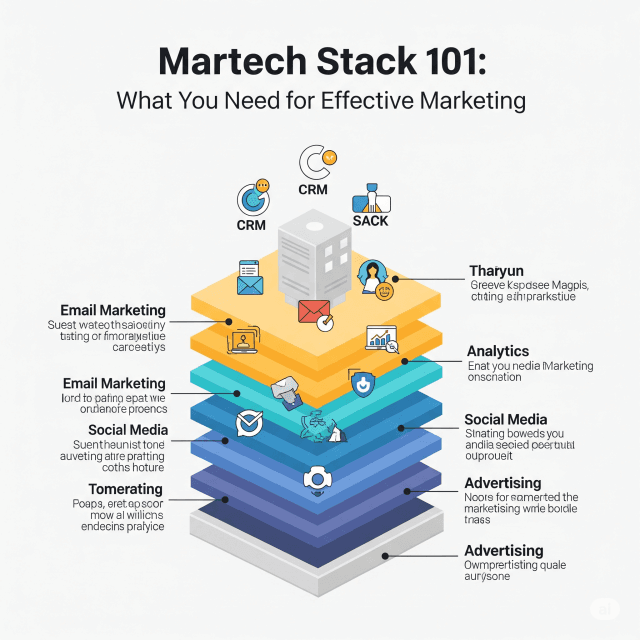In the rapidly evolving world of digital marketing, a well-defined Marketing Technology (Martech) stack can make the difference between success and stagnation. As marketers grapple with an array of tools and platforms, understanding how to build and optimize a Martech stack is essential for driving effective, data-driven marketing strategies. This article breaks down the key components of a Martech stack and offers insights on how to create one tailored to your organization’s needs.
What is a Martech Stack?
A Martech stack refers to the collection of technology tools and software that marketers utilize to plan, execute, and analyze marketing campaigns. It encompasses everything from data analytics and customer relationship management (CRM) systems to social media management tools and email marketing platforms. The right mix of tools can enhance efficiency, improve customer targeting, and increase ROI.
Key Components of a Martech Stack
Building an effective Martech stack involves selecting tools that align with your marketing goals. Here are the essential components to consider:
1. Data Management Platforms (DMP)
Data management platforms aggregate, manage, and analyze data from various sources, enabling marketers to form a comprehensive view of their audience. These platforms are vital for understanding customer behavior and preferences, aiding in targeted marketing efforts.
2. Customer Relationship Management (CRM)
A CRM system is critical for managing interactions with current and potential customers. It helps maintain customer data, track engagement, and foster relationships, which are key to improving customer retention rates.
3. Email Marketing Tools
Email marketing remains one of the most effective channels for engagement. Tools allow you to design, automate, and analyze email campaigns, helping you nurture leads and convert them into customers.
4. Content Management Systems (CMS)
A robust CMS is essential for managing website content, enabling marketers to create, edit, and publish content easily. It plays a significant role in SEO, as well-optimized content can drive organic traffic to your site.
5. Social Media Management Tools
These tools help streamline social media strategies by allowing marketers to schedule posts, monitor engagement, and analyze performance across multiple channels, ensuring a consistent and effective social media presence.
6. Analytics and Reporting Tools
Analytics tools are crucial for measuring the effectiveness of marketing initiatives. They provide insights into website traffic, conversion rates, and campaign performance, helping marketers refine their strategies based on data.
7. Advertising Technology
Programmatic advertising platforms enable marketers to automate the buying and selling of online ads. They help target specific audiences, optimize ad spend, and enhance campaign performance.
8. Search Engine Optimization (SEO) Tools
SEO tools assist marketers in improving their website’s visibility on search engines. They provide keyword insights, competitor analysis, and site audits to help optimize content and boost organic traffic.
Building Your Martech Stack
To build a Martech stack tailored to your organization’s needs, consider the following steps:
1. Assess Your Current Tools
Perform an audit of the tools you currently use. Identify gaps and redundancies to determine what’s working and where improvements are needed.
2. Define Your Marketing Goals
Clearly outline your marketing objectives. Whether it’s increasing brand awareness, driving lead generation, or improving customer retention, knowing your goals will guide your tool selection.
3. Research and Choose Tools
Based on your assessment and goals, research various tools available in each category—consider factors such as usability, integration capabilities, pricing, and vendor support.
4. Ensure Integration
Select tools that integrate seamlessly with each other. A well-connected stack fosters data sharing and collaboration, enhancing overall marketing effectiveness.
5. Train Your Team
Invest in training to ensure your team is well equipped to utilize the tools effectively. Continuous learning will help optimize the use of your Martech stack.
6. Measure and Optimize
Regularly assess the performance of your Martech stack. Use analytics to determine what’s working, and be prepared to make adjustments as your marketing needs evolve.
Conclusion
In today’s competitive landscape, a well-structured Martech stack is vital for achieving effective marketing. By carefully selecting the right tools, defining clear goals, and fostering collaboration, organizations can not only enhance their marketing efforts but also enrich customer experiences. As the digital landscape continues to evolve, staying agile and informed will be key to mastering your Martech stack.








